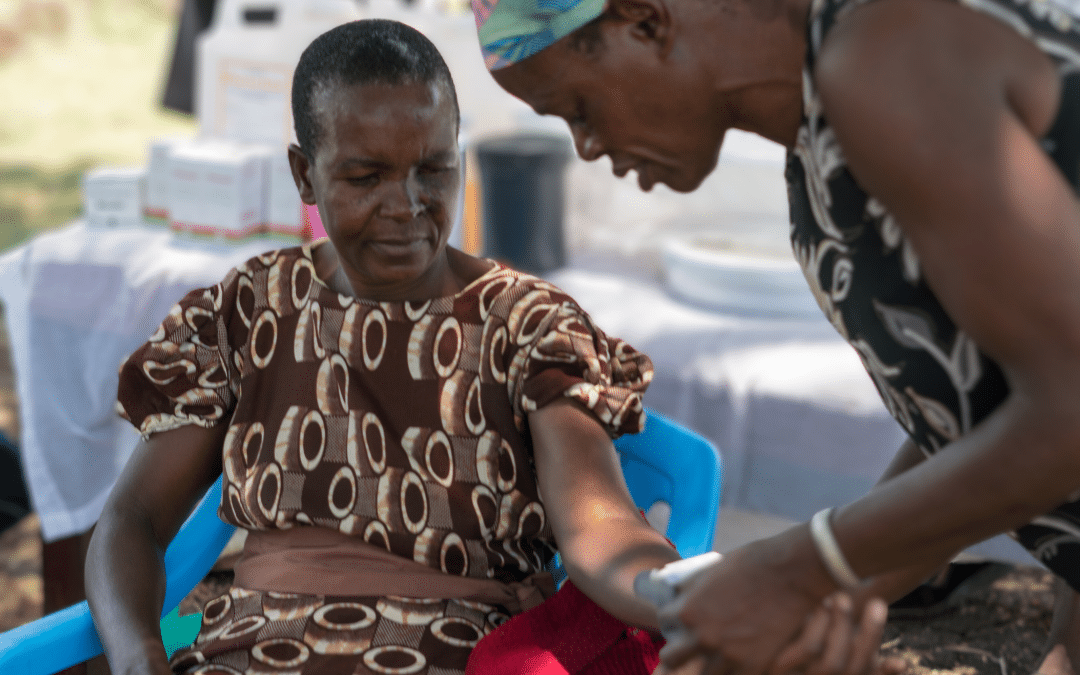
In Guatemala, Community Capital Accumulation Spurs Economic Hope
June 24, 2024Fall 2024 Neighbors Magazine
September 23, 2024Use PEPFAR as a Model for Fighting Vector-Borne Diseases

by Kate Schecter, President & CEO, World Neighbors
Hurricanes, wildfires and other forms of extreme weather exacerbated by climate change have created new risks for everyone worldwide, causing suffering and damage and creating additional public health dangers.
One of the more worrisome dangers is the rapid spread of diseases, especially vector-borne diseases. These are diseases transmitted to humans by animals, most commonly through bites by mosquitoes, ticks and flies. Other animals also carry and transmit diseases to humans. Climate change is causing an increase in these diseases.
Addressing this challenge requires a multi-pronged approach, including improved tracking and monitoring of insects and disease outbreaks, investment in strengthening public health infrastructure — particularly in low-income countries — and collaboration between government agencies and community-based organizations to reach marginalized populations.
The COVID-19 pandemic was a stark reminder of global vulnerability to infectious diseases, highlighting the urgent need for increased investment to prevent and mitigate such threats. The recent spread of bird flu to cattle in the United States has only underscored that need.
The U.S. President’s Emergency Plan for AIDS Relief is an example of a successful global response to an urgent global health crisis that governments and international organizations should replicate to address the threats posed by vector-borne diseases.
The incidence of vector-borne disease involves an interaction of multiple factors affecting animal hosts, vectors and people. Climate change, though not as important as other drivers, intensifies these factors.
First, rising global temperatures lengthen warm seasons and increase the geographic range of disease-carrying insects. As temperatures rise, mosquitoes, ticks and other warm-weather insects can move into new regions and higher altitudes. This phenomenon already impacts the United States, where warming temperatures expand habitats for Lyme-carrying ticks.
As a result, the number of annual cases of Lyme disease transmitted by ticks almost quadrupled between 1996 and 2022, with dramatic increases in the number of Lyme disease cases in northern states like Maine, where warmer temperatures have made it easier for ticks to thrive.
Second, increased rainfall, flooding and humidity create more areas for the breeding of insects that carry harmful diseases. This was evident after massive flooding in Louisiana in August 2016, where increased breeding habitats led to a jump in the number of Aedes mosquitoes. These vectors are hosts of Zika, a viral infection that can cause microcephaly and other congenital malformations in infants born to infected mothers.
Third, human travel and migration due to climate change will further exacerbate these challenges. With larger numbers of people forced from their communities by drought and other extreme weather events, migration exposes people to viruses to which they are not immune. This pattern of increased migration is particularly concerning in overcrowded urban areas, where new waves of migrants can introduce disease risks. While the COVID-19 pandemic serves as a reminder that wide-scale disease outbreaks can occur anywhere, it also highlights the vulnerability of densely populated urban areas to the spread of infectious diseases.
So, what can public and private organizations, including international development organizations, do to address the risks of vector-borne diseases?
One critical step is establishing enhanced and reliable insect measurement and tracking systems. Nearly a decade ago the World Health Organization initiated a plan to achieve this. However, the sheer volume and mobility of insects, often traveling undetected globally through the movement of goods and people, make this an immense challenge. While increased efforts to track and measure infections are commendable, additional investment in tracking insects as their animal and plant hosts move around the globe is crucial and requires a concerted effort from governing bodies at all levels.
The WHO and other organizations are addressing another crucial and related challenge: strengthening human disease tracking. Effective disease tracking requires well-funded public health policies and robust infrastructure. The COVID-19 pandemic exposed the inadequacies of existing systems globally, highlighting the need for comprehensive communicable disease tracking and the necessary infrastructure across all regions.
While developed countries have the resources to improve existing systems, low-income countries often lack these resources. Building robust public health systems in these nations, the work of many international NGOs, will require significant investment for years to come. Additionally, both public and private organizations must significantly increase their support for primary care and public health services in low-income countries.
Building and maintaining effective public health facilities and services is a complex undertaking that cannot happen in a vacuum. It not only requires dedicated resources, regulation and access to medicines and equipment, but also sustainable economic and social development. This is because access to health services, especially preventive and basic services, directly impacts individual and community well-being, enabling productive work, capital accumulation and economic development. Therefore, investing in both development and public health goes hand in hand, as they are ultimately two sides of the same coin.
Most importantly, preventing and treating vector-borne and other diseases requires citizen awareness and access to health facilities. While government bodies are critical in disseminating information and resources, community-based groups are equally essential partners. Their contribution is exemplified by the successful collaboration with governments in the treatment of HIV/AIDS, particularly in Africa and Asia. These groups also played an important role in prevention and outreach, especially in rural areas.
The importance of community outreach and health care access was evident in the work of World Neighbors, a U.S.-based organization working with marginalized communities in rural areas. Collaborating with community-based groups in Kenya, Uganda and Tanzania, they facilitated the delivery of HIV/AIDS medications through PEPFAR. While PEPFAR provided these vital medications, reaching rural, isolated communities required community participation.
World Neighbors’ strategy focuses on voluntary counseling and testing through the village clinics established by community partners. Volunteers educate residents about HIV/AIDS, encourage people to get tested, and provide support to those with HIV. This includes facilitating access to PEPFAR medications, teaching proper self-administration, monitoring medication use, and educating individuals on healthy living practices.
The clinics and volunteers not only facilitate access to medications but also foster a supportive environment for those living with HIV. These individuals organize themselves into support groups to discuss healthy and positive living, nutrition and drug management. They also receive psychological and moral support from their peers. The groups encourage members to join savings and credit groups, where they can obtain loans and initiate or expand their income-generating activities, including handicrafts, the sale of consumable household goods, poultry and dairy goat production, kitchen gardening and farming.
Earning a living, combined with support groups and access to medication, motivates Kenyans, Ugandans and Tanzanians with HIV to stay healthy and adhere to their drug regimens. Once too sick to work, they now run their own farms and earn a living. What was once considered a death sentence has now become a manageable chronic illness.
Policymakers should emulate this type of successful community-based cooperation in the fight against vector-borne illnesses.
These PEPFAR-related initiatives should serve as a model for community-based groups funded and supported by governments and other international organizations. By replicating this approach, these groups can help address and mitigate vector-borne diseases exacerbated by climate change and other factors.
Community-based groups are essential partners in the construction and performance of public health systems that historically have played a central role in reducing illness and increasing life expectancy.
Building public health programs on trusted relationships in communities remains a sound strategy for both low-income and developed countries to combat the increased spread of vector-borne diseases. Such programs create and maintain the conditions that enable people to increase incomes and live healthier lives.
This article originally appeared on TheWellNews.com on July 17, 2024.

